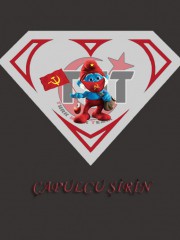


Given the specialised nature of the capability, SOCOMD itself is best placed to make small-scale investment decisions, to guide experimental work on developing future capability and to respond quickly to changing operational requirements. SOCOMD should be provided with an ongoing funding line for specialised, small-scale equipment projects.
#Usa critical ops clan how to#
The report makes a number of practical policy recommendations on how to strengthen the capability: Nor should growth be at the expense of the regular Army because regular Army capabilities complement those of the SOF such forces work best as the top of a ‘pyramid’ of land forces that provides the personnel base and many of the required enabling force elements.

Such an asset is particularly valuable in an era where regional defence engagement and clandestine operations are likely to become more important.Īny temptation to reduce the special operations capability as a cost-cutting measure should be resisted. That’s because SOF will continue to provide Government with a high-value military asset-useable and ready military forces. The main message is that Defence should consolidate and further develop the SOF’s capability to act as part of a joint force. To inform government decisions on that issue, ASPI today released its report (PDF) A versatile force-The future of Australia’s special operations capability (my co-authors are ASPI colleagues Andrew Davies and Peter Jennings). But with the drawdown of global and regional deployments it’s important to ask what to do next with the special operations capability. As a result, the Special Operations Command (SOCOMD) received more generous funding, grew in personnel, and gained greater prominence within the ADF’s institutional structure. Their ability to conduct highly sensitive missions, to operate in complex terrain, and to do so at short notice made them an attractive military instrument. One critical question in this context is the future utility of special operations forces (SOF), which became the ‘capability of choice’ for Australian governments in operations such as Iraq and Afghanistan. As the Australian Defence Force (ADF) enters into the post-Afghanistan period another issue deserves equal attention: the future of the land force that bore the brunt of the operational burden for over a decade. Unsurprisingly, it’s the big defence procurement decisions that make the headlines-whether it’s the choice about the future submarine or last week’s decision to acquire 58 Joint Strike Fighters (JSF).


 0 kommentar(er)
0 kommentar(er)
